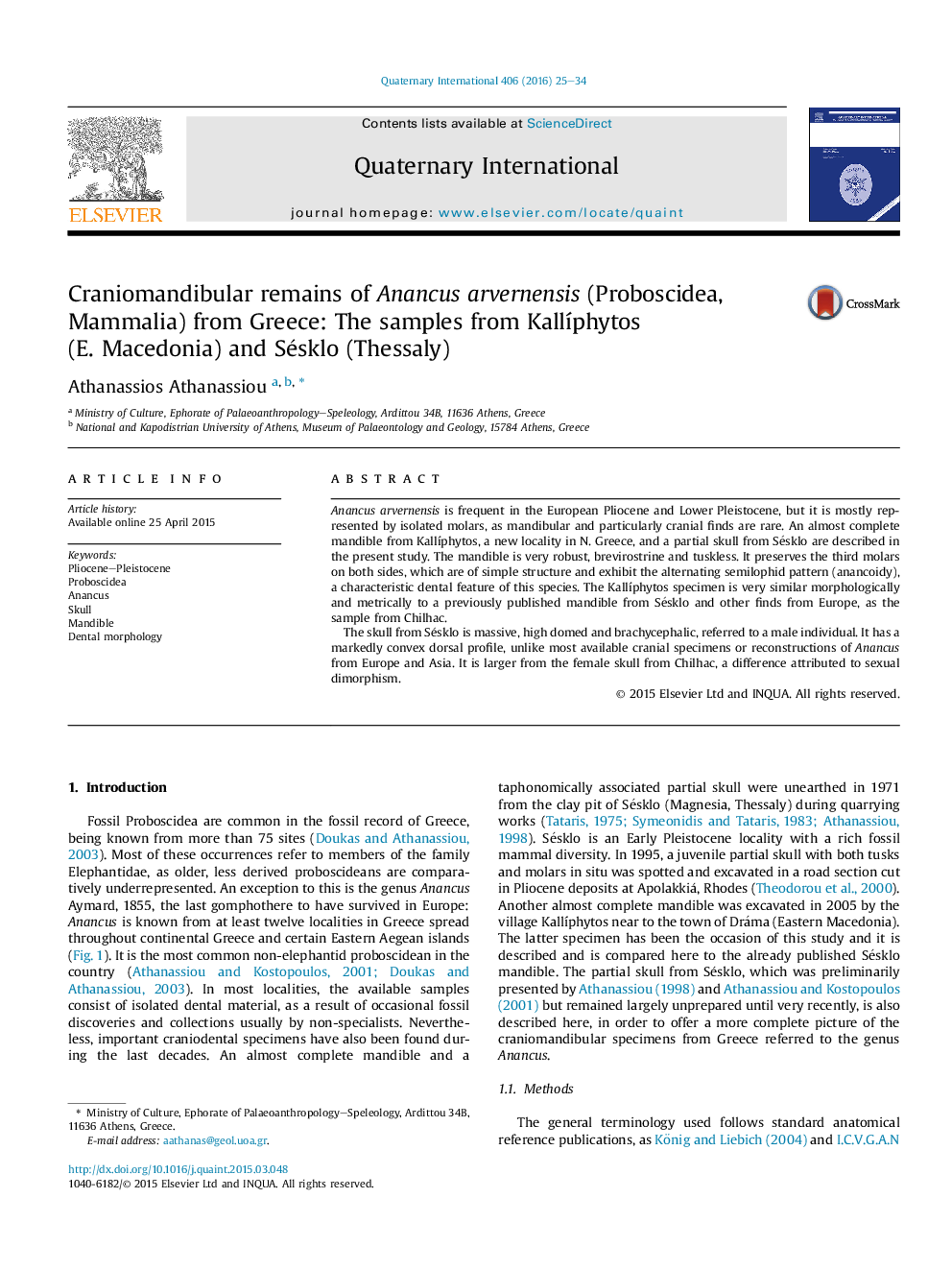| Article ID | Journal | Published Year | Pages | File Type |
|---|---|---|---|---|
| 1039940 | Quaternary International | 2016 | 10 Pages |
Anancus arvernensis is frequent in the European Pliocene and Lower Pleistocene, but it is mostly represented by isolated molars, as mandibular and particularly cranial finds are rare. An almost complete mandible from Kallíphytos, a new locality in N. Greece, and a partial skull from Sésklo are described in the present study. The mandible is very robust, brevirostrine and tuskless. It preserves the third molars on both sides, which are of simple structure and exhibit the alternating semilophid pattern (anancoidy), a characteristic dental feature of this species. The Kallíphytos specimen is very similar morphologically and metrically to a previously published mandible from Sésklo and other finds from Europe, as the sample from Chilhac.The skull from Sésklo is massive, high domed and brachycephalic, referred to a male individual. It has a markedly convex dorsal profile, unlike most available cranial specimens or reconstructions of Anancus from Europe and Asia. It is larger from the female skull from Chilhac, a difference attributed to sexual dimorphism.
